At the start of autumn, landscapes are marked by the presence of colourful bushes here and there. Upon closer inspection, it is not the flowers that catch the eye at this time of year, but rather the fruits. Certain botanical families, such as the Rosaceae, which include the hawthorns lining our roads, are even specialists in fruiting. But they are not the only ones! Many other families boast ornamental fruit shrubs. These are valuable allies for adding colour and life to the garden at the end of the season and can be used as hedges, in borders, or as standalone specimens.
Here is my personal, though not exhaustive, selection of the best ornamental fruit shrubs for autumn.
1) Ornamental Apple Trees
We love ornamental apple trees for their abundance of flowers in spring, but also for the profusion of fruits that follows in autumn. As big as cherries, edible but only appreciated by birds, they display very colourful fruits, green, yellow, orange, or ruby red, depending on the varieties.
Hardy and easy to care for, these decorative apple trees are not demanding. They thrive in full sun and ordinary soil, although they prefer rich, deep, loose, and cool soils.
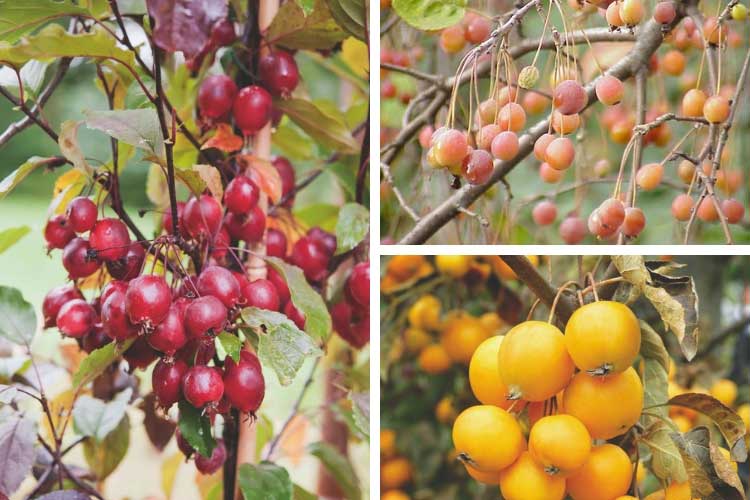 The fruits of Malus Red Obelisk and Malus Golden Hornet (after and before frost): two very interesting varieties!
The fruits of Malus Red Obelisk and Malus Golden Hornet (after and before frost): two very interesting varieties!
2) Sorbus Trees
Very famous, the rowan tree (Sorbus aucuparia) is a small tree that literally covers itself with clusters of small bright red fruits at the end of the season. They persist on the tree for quite a while and feed the thrushes. Less common in cultivation, the Kashmir rowan (Sorbus cashmiriana) is almost unnoticed in gardens, as its spring flowering is quite discreet. But this is not the case with its superb milky white fruits, which appear from September to November!
Both of these rowans can be planted in any soil, fresh to moderately dry, acidic, neutral to slightly calcareous, but well-drained. They prefer full sun but will tolerate partial shade.
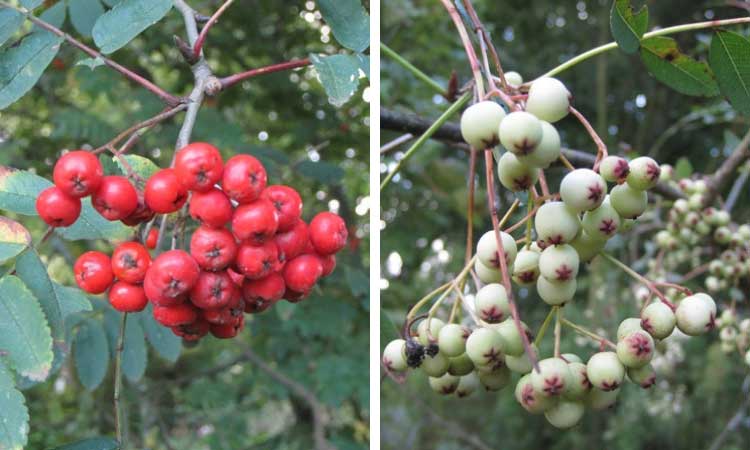 The fruits of the very famous rowan tree (Sorbus aucuparia) / The fruits of Sorbus cashmiriana, the rarer variety
The fruits of the very famous rowan tree (Sorbus aucuparia) / The fruits of Sorbus cashmiriana, the rarer variety
3) Cornus Kousa
Much better known for its large flower bracts, Japanese dogwood (Cornus kousa) produces beautiful pink fruits, resembling lychees. This hardy shrub grows perfectly well in our climates. However, it particularly enjoys rich, slightly acidic, cool, well-drained soils and light shade in hot climates.
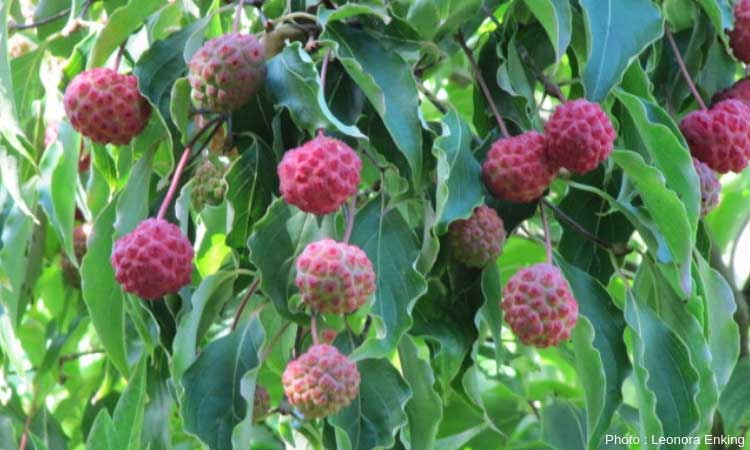 The decorative fruits of Cornus kousa
The decorative fruits of Cornus kousa
4) Clerodendron
It is when covered with its small fruits the size of currants that we understand why this shrub has been named "the tree of turquoises" (Clerodendrum trichotomum). Dark blue when ripe (more than turquoise…), its fruits sit on a pink-red calyx, like pearls in their settings.
Also known as "Clergy Tree" or "Tree of Fortune", this shrub requires very little maintenance. It can be planted in partial shade or full sun, in fresh, well-drained soil. Left to grow freely, it is perfect for hedging. Trained as a tree, it will form a remarkable specimen when isolated.
 The berries of the Clerodendron are like pearls in their setting
The berries of the Clerodendron are like pearls in their setting
5) Viburnums
Viburnums include a large number of fruit-bearing varieties, among which the Viburnum opulus or Guelder rose, much better known for its spring white flowers than for its autumn orange-red fruits. By the way, do not expect anything from the "snowball" viburnum (Viburnum opulus 'Roseum'), its flowers are beautiful but sterile and therefore do not produce any fruits.
Equally interesting for its evergreen foliage and ivory-white flowers, the Viburnum (x) hillieri 'Winton' is a true marvel in autumn when its elongated, intense red fruits appear.
Rather accommodating, viburnums adapt to a fairly wide range of soils. They thrive best in rich soil that remains cool in summer but well-drained in winter. Partial shade is ideal for their exposure.
 Viburnum opulus and Viburnum (x) hillieri 'Winton'
Viburnum opulus and Viburnum (x) hillieri 'Winton'
6) Callicarpa
The Callicarpa, known as the "candy tree" is a shrub that has made its fruits its trademark! It is remarkable from the beginning of autumn when its small flowers give way to a multitude of small purple balls, a very rare colour in the plant world. It reaches its peak in winter when it is completely bare.
In the garden, whether in borders or hedges, it should be planted in full sun (to encourage fruiting) except in hot climates where it will be more comfortable in partial shade. This shrub prefers rather cool, rich soil, but a bit of compost and a good layer of mulch allow it to be grown almost anywhere in France.
 Callicarpa bodinieri 'Profusion' is a small shrub that remains discreet for much of the year, waking up in autumn to offer beautiful purple fruits
Callicarpa bodinieri 'Profusion' is a small shrub that remains discreet for much of the year, waking up in autumn to offer beautiful purple fruits
7) Decaisnea Fargesii
In the realm of bizarre and original fruiting, the Decaisnea fargesii stands out with its funny turquoise pods in autumn. You won’t be surprised to learn that it is also called the "blue bean tree"! This small shrub, native to China, with its tropical plant appearance, is well adapted to our cold climate. In spring, it produces cream-yellow flowers that transform in autumn into fleshy pods containing flat black seeds. They are surrounded by a translucent flesh with a surprising taste (a mix of watermelon and banana…), as it is indeed edible!
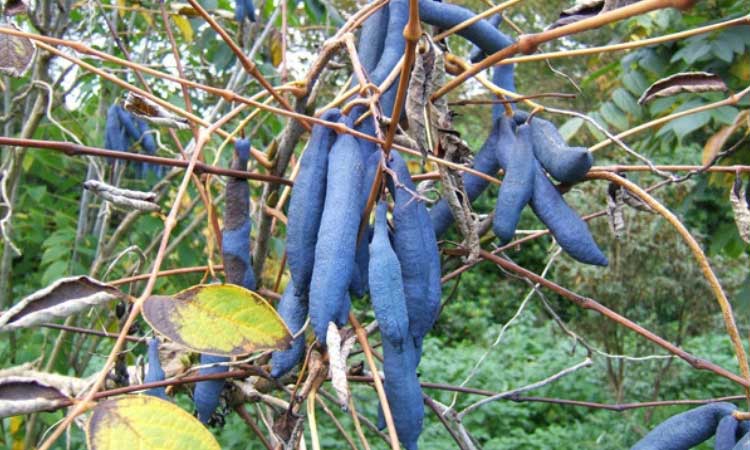 Decaisnea fargesii or "blue bean tree": a true curiosity in the garden!
Decaisnea fargesii or "blue bean tree": a true curiosity in the garden!
8) Euonymus Phellomanus
While all these shrubs display beautiful spring or summer flowers, there is one shrub that, like the Callicarpa, showcases dazzling fruiting in autumn. This is the Euonymus phellomanus. This large spindle tree bears a multitude of candy-pink fruits. They gently release small orange-red seeds in early autumn. Hardy, it thrives in ordinary, humus-rich soil that is not too dry to fresh. Full sun or partial shade will suit it perfectly.
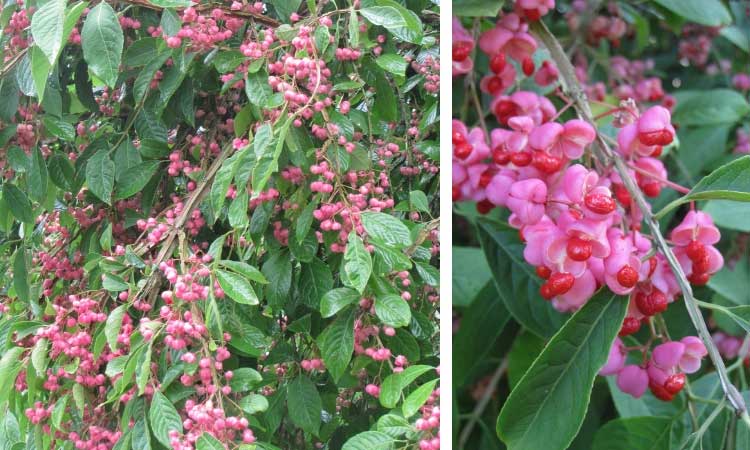 Euonymus phellomanus, remarkable fruits
Euonymus phellomanus, remarkable fruits
All these shrubs contribute to the ornamental appeal of the garden in autumn and winter, but they also play a very important ecological role. A large number of bird and insect species feed on their berries in autumn and winter. This ecological niche is a valuable ally for the garden as it harbours many predators that, come spring, feast on snails, slugs, and various worms, thus preventing the gardener from having to resort to the indiscriminate use of various products.































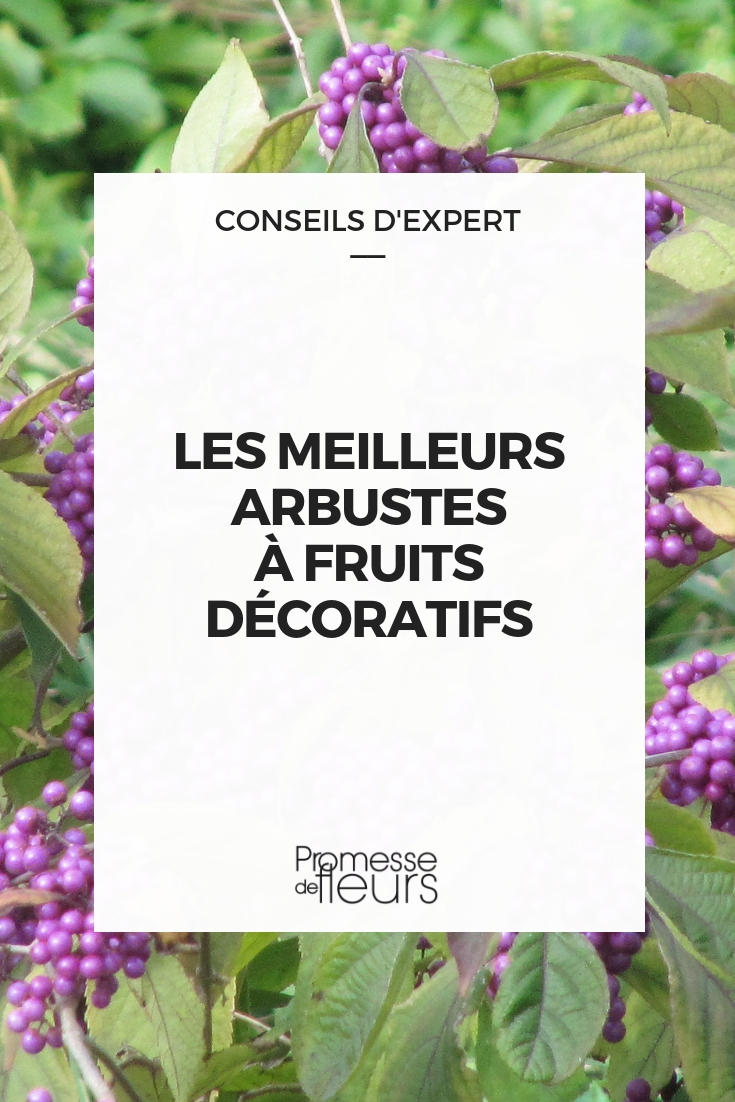
Comments